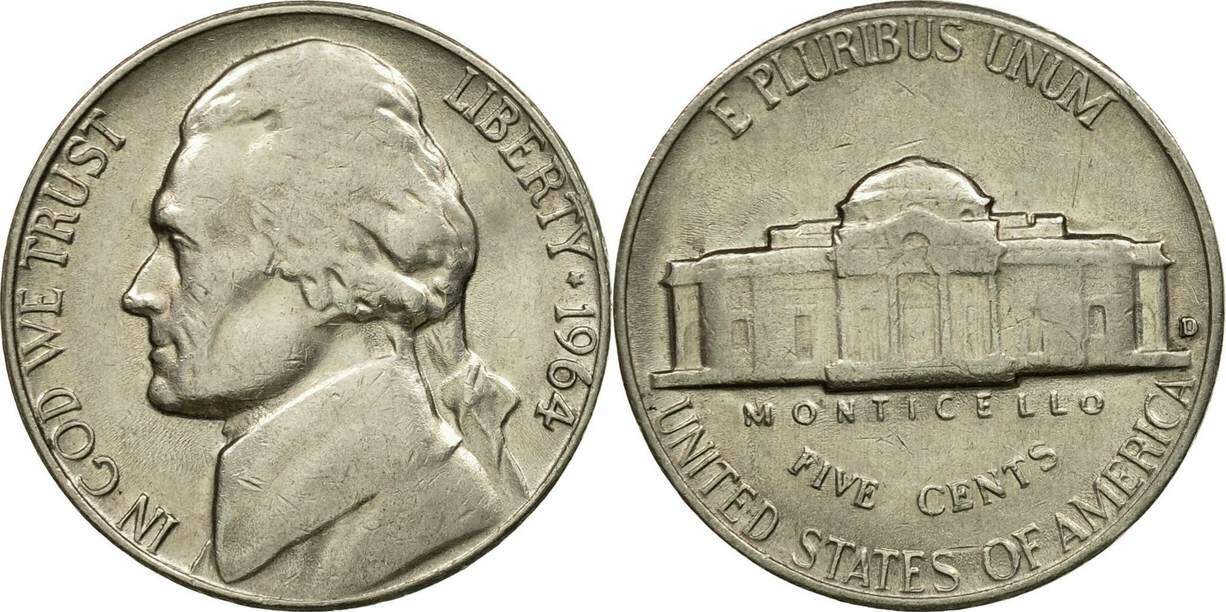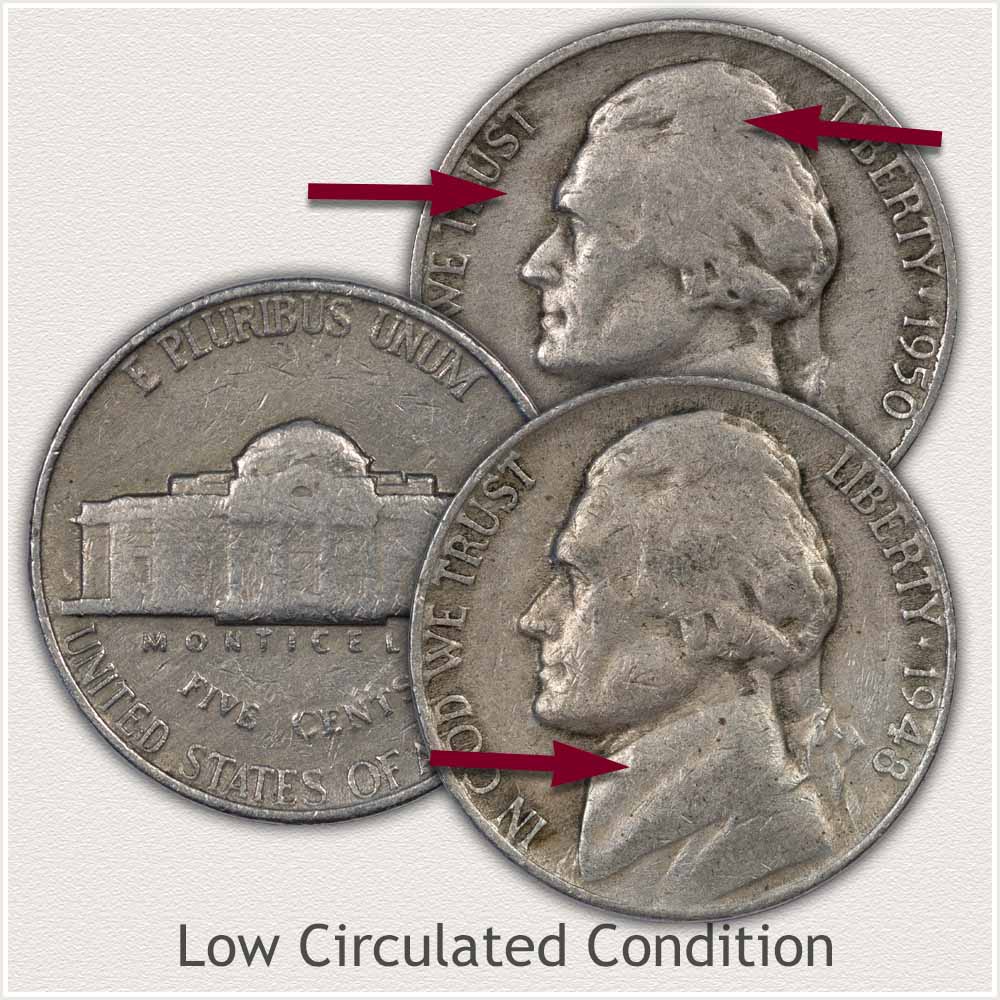The 1964 nickel, popularly known as the Jefferson Nickel, is a fascinating topic for coin collectors and numismatists alike. While many nickels from this year are common and easy to find, there are particular specimens that hold significant value due to their rarity and unique characteristics. Understanding the factors that determine the value of a 1964 nickel can provide valuable insights for both novice and seasoned collectors. From minting errors to historical significance, each aspect adds a layer of intrigue to this seemingly ordinary coin.
For collectors, the quest for rare coins is akin to a treasure hunt, with each discovery contributing to the rich tapestry of numismatic history. The 1964 nickel represents a period of transition in the United States coinage, as it was the last year nickels were struck with the same metal composition before changes in minting processes and materials were implemented. This historical context, combined with the potential for finding rarities and errors, makes the 1964 nickel a compelling piece for any collection.
In this article, we will delve into the various factors that influence the value of the 1964 nickel, including minting errors, grading criteria, and market demand. We will also explore the collectible aspects of this coin, providing a comprehensive guide for those interested in expanding their numismatic knowledge or enhancing their collection. Whether you're a seasoned collector or a curious enthusiast, this guide offers valuable insights into the world of rare 1964 nickels.
Read also:Enduring Allure The Timeless Appeal Of Dawn Wells Measurements And More
Table of Contents
- History of the 1964 Jefferson Nickel
- How Were 1964 Nickels Minted?
- What Are the Common Minting Errors?
- How is the 1964 Nickel Graded?
- Market Demand for Rare 1964 Nickels
- Identifying Rare 1964 Nickels
- Factors That Influence the Value of 1964 Nickels
- Tips for Collecting 1964 Nickels
- Is Investing in 1964 Nickels Worth It?
- How to Care for Your 1964 Nickel Collection?
- Future of Collecting 1964 Nickels
- Frequently Asked Questions
- Conclusion
History of the 1964 Jefferson Nickel
The Jefferson Nickel, first introduced in 1938, replaced the Buffalo Nickel and featured President Thomas Jefferson on the obverse and his home, Monticello, on the reverse. By 1964, the coin had undergone several changes, most notably in its metal composition. The year 1964 marked a significant moment for the nickel, as it was the last year the coin was produced with 75% copper and 25% nickel alloy before changes were made to address coin shortages.
How Were 1964 Nickels Minted?
The 1964 nickel was minted using traditional coinage methods at the Philadelphia and Denver mints. The coins were struck using dies that imprinted the design onto metal blanks. During this process, errors could occur, leading to the creation of rare and valuable specimens. Understanding the minting process is crucial for collectors aiming to identify these errors.
What Are the Common Minting Errors?
Minting errors in the 1964 nickel include various types of mistakes such as doubled dies, off-center strikes, and planchet errors. These errors significantly increase the value of the coin due to their rarity. Collectors should familiarize themselves with these errors to spot valuable coins in circulation.
Common Minting Errors
- Doubled Dies
- Off-Center Strikes
- Planchet Errors
How is the 1964 Nickel Graded?
Grading is a critical aspect of determining a coin's value, particularly for the 1964 nickel. Coins are graded based on their condition, with factors such as luster, strike quality, and surface preservation taken into account. Professional grading services provide standardized assessments, enhancing a coin's marketability.
Grading Criteria
- Strike Quality
- Luster
- Surface Preservation
Market Demand for Rare 1964 Nickels
The market demand for rare 1964 nickels fluctuates based on factors such as collector interest, rarity, and historical significance. Understanding these dynamics can help collectors make informed decisions when buying or selling 1964 nickels.
Identifying Rare 1964 Nickels
Identifying rare 1964 nickels requires a keen eye and knowledge of specific markers that denote rarity. This includes recognizing minting errors, understanding historical context, and differentiating between common and rare variations.
Read also:All You Need To Know About Taylor Swifts Parents Their Careers Fame And Family Life
Factors That Influence the Value of 1964 Nickels
Several factors influence the value of a 1964 nickel, including its condition, rarity, and historical significance. Collectors should consider these elements when evaluating potential purchases or sales.
Key Value Factors
- Condition
- Rarity
- Historical Significance
Tips for Collecting 1964 Nickels
For collectors interested in 1964 nickels, understanding best practices can enhance their experience and increase their chances of acquiring valuable coins. This includes networking with other collectors, attending coin shows, and conducting thorough research.
Is Investing in 1964 Nickels Worth It?
Investing in 1964 nickels can be rewarding for those with a keen understanding of the market and an eye for rarity. However, like any investment, there are risks involved, and prospective investors should weigh these carefully against potential rewards.
How to Care for Your 1964 Nickel Collection?
Proper care and maintenance of a nickel collection are essential to preserve its value. This involves storing coins in appropriate holders, avoiding handling with bare hands, and regularly inspecting them for signs of wear or damage.
Future of Collecting 1964 Nickels
The future of collecting 1964 nickels looks promising, with continued interest from both novice and experienced collectors. As the numismatic community evolves, new technologies and research methods may further enhance the understanding and appreciation of these coins.
Frequently Asked Questions
What makes a 1964 nickel rare?
A 1964 nickel is considered rare if it features minting errors, is in excellent condition, or has a unique historical significance.
How can I determine the value of my 1964 nickel?
The value of a 1964 nickel can be determined by its condition, rarity, and market demand. Consulting a professional grading service can provide a more accurate assessment.
Are all 1964 nickels valuable?
Not all 1964 nickels are valuable. Common specimens are still widely available, but rare errors or high-grade examples can be worth significantly more.
Where can I buy or sell rare 1964 nickels?
Rare 1964 nickels can be bought or sold through coin dealers, auctions, online marketplaces, and coin shows.
What should I look for when collecting 1964 nickels?
When collecting 1964 nickels, look for minting errors, good condition, and historical context to identify valuable coins.
Is professional grading necessary for 1964 nickels?
Professional grading can enhance a coin's value and marketability, making it a worthwhile investment for rare or high-grade 1964 nickels.
Conclusion
The 1964 nickel holds a special place in the world of coin collecting, offering both historical significance and the potential for valuable discoveries. By understanding the factors that influence its value and rarity, collectors can make informed decisions and enhance their collections. Whether you're an experienced numismatist or a curious newcomer, the 1964 nickel offers a fascinating journey into the past and a rewarding hobby for the future.

